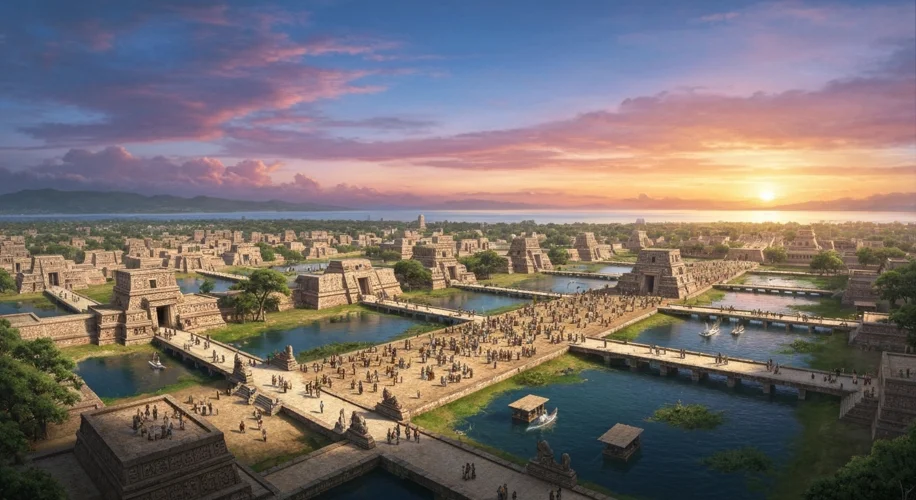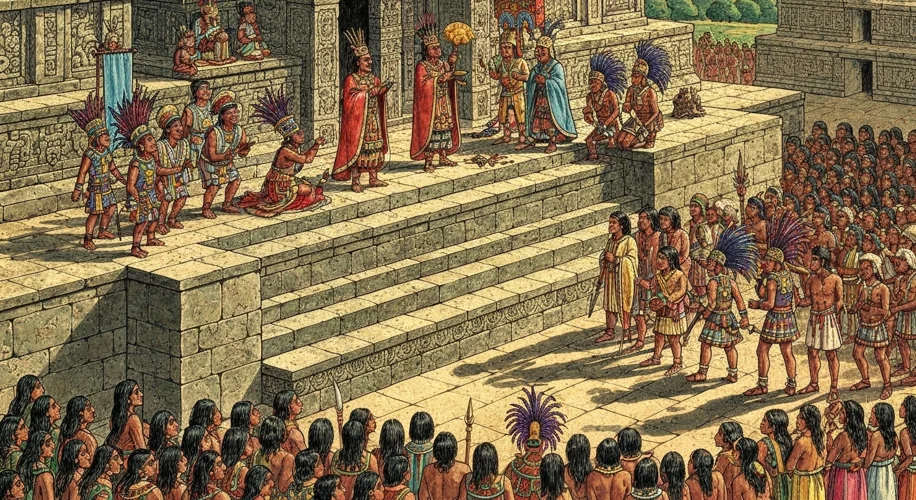Imagine a city built on water, a marvel of engineering and artistry that rose from the very heart of a vast lake. This was Tenochtitlan, the magnificent capital of the Aztec Empire, a civilization that, for a brief but brilliant period, dominated Mesoamerica.
Before the arrival of the Spanish, the Aztecs, or Mexica as they called themselves, were a force to be reckoned with. Their empire, forged through a complex web of tribute, warfare, and political maneuvering, stretched across a significant portion of modern-day Mexico. At its center, pulsating with life and power, stood Tenochtitlan.

Founded in 1325 CE on a swampy island in Lake Texcoco, Tenochtitlan was not built on solid ground but rather on chinampas – artificial islands created from layers of mud and vegetation. These “floating gardens” were incredibly fertile, providing the city with an abundance of food. Canals served as the main thoroughfares, navigated by canoes, giving the city a unique, watery grandeur. The strategic location, defensible and resource-rich, was a testament to the Aztecs’ ingenuity and their deep understanding of their environment.
The city’s heart was the Templo Mayor, a massive dual pyramid dedicated to Huitzilopochtli, the god of sun and war, and Tlaloc, the god of rain and fertility. This towering structure was the focal point of Aztec religious life, a place where elaborate ceremonies, including human sacrifice, were performed to appease the gods and ensure the continuation of the cosmos. The Aztecs believed that the gods required the “precious water” of human blood to sustain the sun’s daily journey and to prevent the world from being swallowed by darkness.
Life in Tenochtitlan was highly structured. Society was divided into distinct classes, with nobles, priests, warriors, merchants, artisans, and commoners all playing their roles. The calpulli, a kinship-based neighborhood or clan, formed the basic social and economic unit. Education was highly valued, with separate schools for boys and girls, and specialized academies for aspiring warriors and priests.
Agriculture was the backbone of the economy, with maize, beans, and squash being staple crops. Trade flourished, with a bustling marketplace in Tlatelolco (which later merged with Tenochtitlan) attracting merchants from across the empire and beyond. Here, goods from distant lands, including jade, obsidian, feathers, and cacao, were exchanged, often using cacao beans as a form of currency.
The arrival of Hernán Cortés and his Spanish conquistadors in 1519 marked the beginning of the end for this remarkable civilization. While the Spanish were initially awestruck by the city’s beauty and sophistication, their ambition, coupled with superior weaponry and the devastating impact of European diseases like smallpox, proved insurmountable for the Aztecs. Emperor Moctezuma II’s attempts to appease and integrate the Spanish were ultimately futile.
Despite fierce resistance led by warriors like Cuauhtémoc, Tenochtitlan fell to the Spanish in 1521 after a brutal siege. The city was systematically destroyed, its magnificent temples and palaces razed, and a new Spanish capital, Mexico City, was built upon its ruins. The legacy of Tenochtitlan, however, endures, a reminder of the vibrant, complex, and ultimately tragic story of the Aztec Empire.
The conquest of the Aztecs was not merely a military victory; it represented a clash of worlds, a collision of cultures and beliefs that would irrevocably alter the course of history. The fall of Tenochtitlan sent shockwaves across the Atlantic, fueling further European exploration and colonization of the Americas, and leaving an indelible mark on the global landscape.

